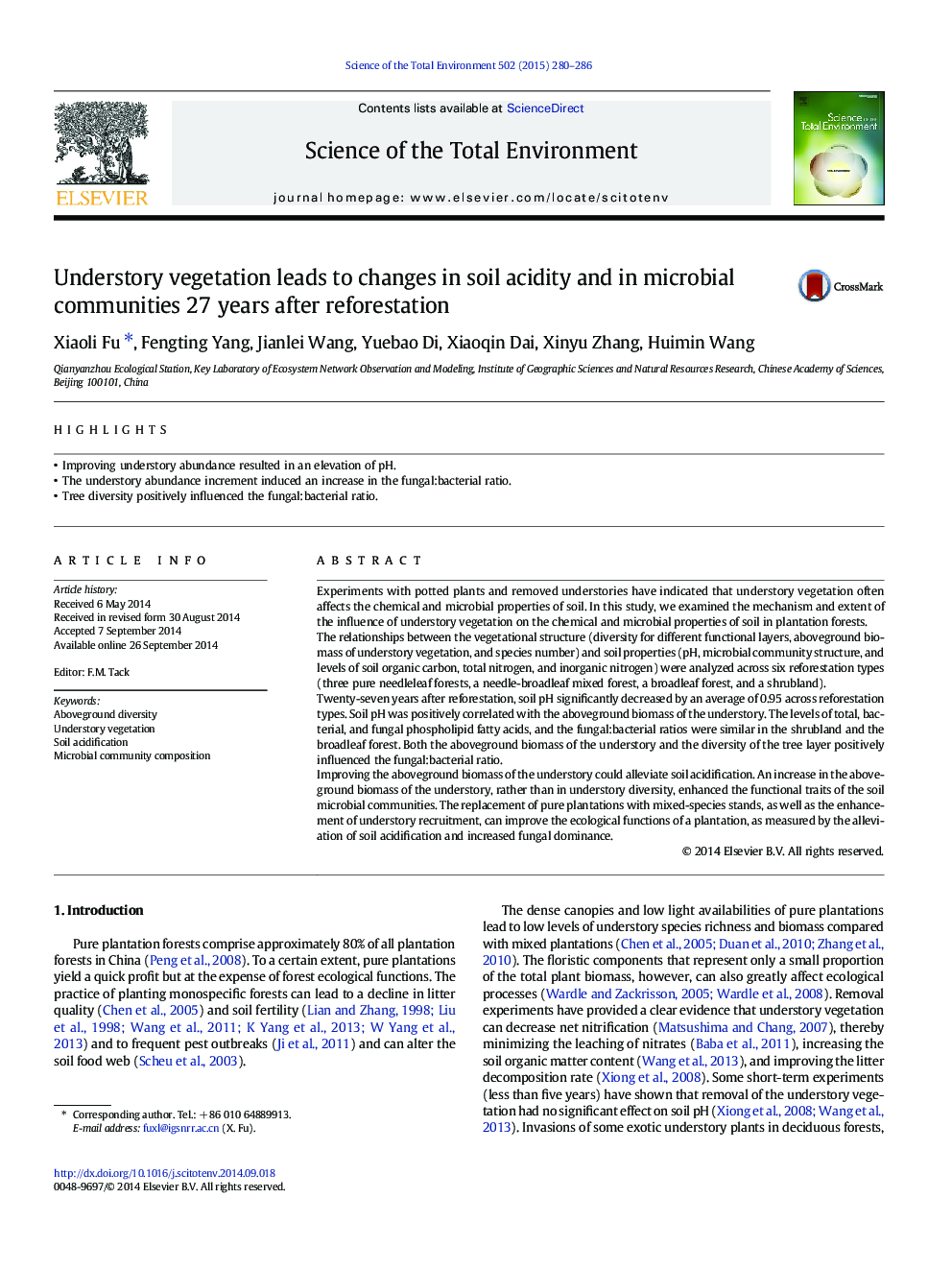| Article ID | Journal | Published Year | Pages | File Type |
|---|---|---|---|---|
| 6328449 | Science of The Total Environment | 2015 | 7 Pages |
â¢Improving understory abundance resulted in an elevation of pH.â¢The understory abundance increment induced an increase in the fungal:bacterial ratio.â¢Tree diversity positively influenced the fungal:bacterial ratio.
Experiments with potted plants and removed understories have indicated that understory vegetation often affects the chemical and microbial properties of soil. In this study, we examined the mechanism and extent of the influence of understory vegetation on the chemical and microbial properties of soil in plantation forests.The relationships between the vegetational structure (diversity for different functional layers, aboveground biomass of understory vegetation, and species number) and soil properties (pH, microbial community structure, and levels of soil organic carbon, total nitrogen, and inorganic nitrogen) were analyzed across six reforestation types (three pure needleleaf forests, a needle-broadleaf mixed forest, a broadleaf forest, and a shrubland).Twenty-seven years after reforestation, soil pH significantly decreased by an average of 0.95 across reforestation types. Soil pH was positively correlated with the aboveground biomass of the understory. The levels of total, bacterial, and fungal phospholipid fatty acids, and the fungal:bacterial ratios were similar in the shrubland and the broadleaf forest. Both the aboveground biomass of the understory and the diversity of the tree layer positively influenced the fungal:bacterial ratio.Improving the aboveground biomass of the understory could alleviate soil acidification. An increase in the aboveground biomass of the understory, rather than in understory diversity, enhanced the functional traits of the soil microbial communities. The replacement of pure plantations with mixed-species stands, as well as the enhancement of understory recruitment, can improve the ecological functions of a plantation, as measured by the alleviation of soil acidification and increased fungal dominance.
